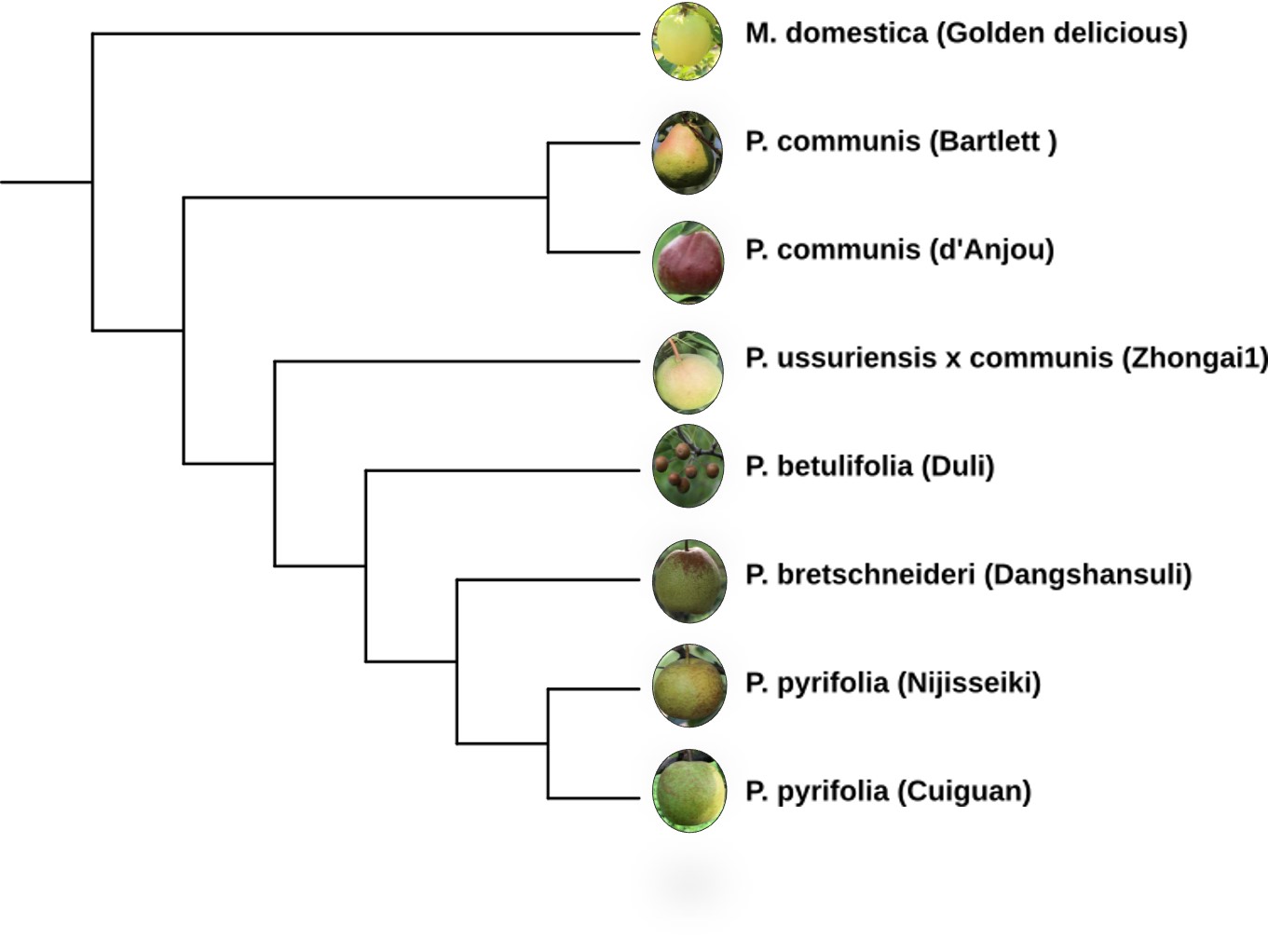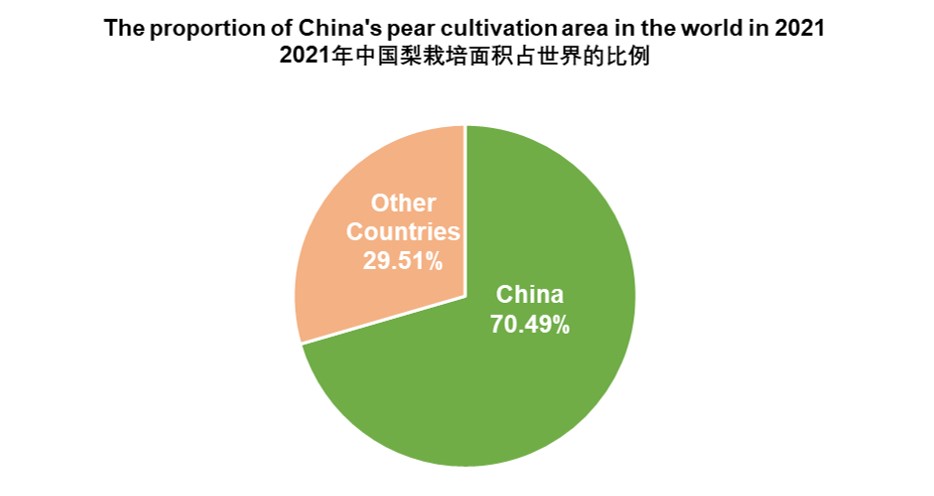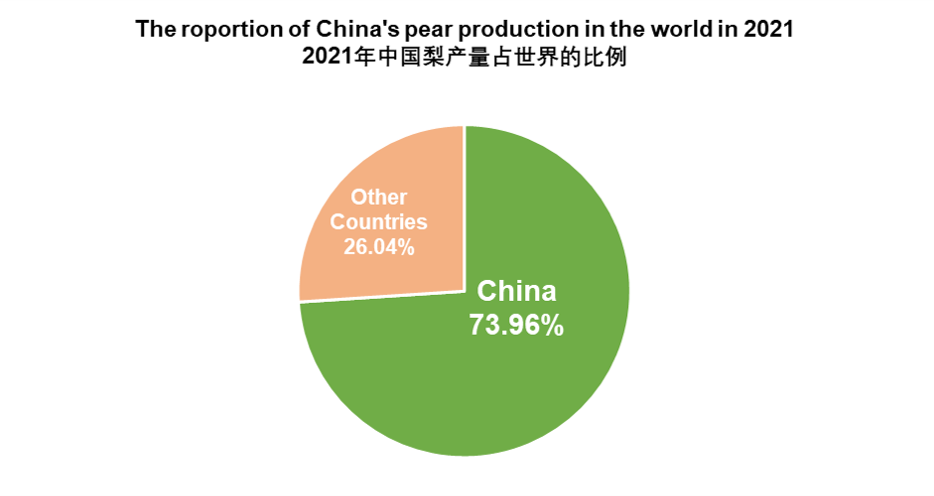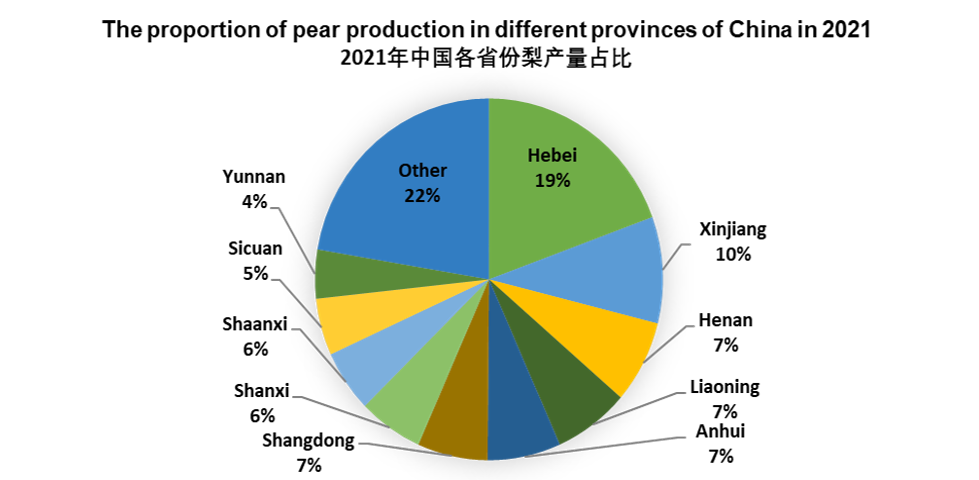Brief introduction
China is the origin center of plants in genus Pyrus and one of the diversity centers for cultivated pear trees in the world. With an over 3000-year history of cultivation and long-term natural selection and artificial improvement, China has abundant pear germplasm resources with obvious oriental pear characteristics. China is the largest pear producer in the world. The total cultivated area and production of pear in China was 986,479 hectares and 18.978 million tons, respectively, accounting for 70.49% and 73.96% of the total pear planting area and production in the world (FAO, 2021). Pear tree is widely distributed in entire China except Hainan Province, Hong Kong and Macao, and mostly cultivated in the provinces (autonomous regions or municipalities) of Hebei, Liaoning, Xinjiang, Sichuan, Henan, Yunnan, Guizhou, Shaanxi, Shanxi, Anhui, etc (NBS, 2019).






Available Tools
Gene Search
Search any genes of interest in pear genomes using sequence ID.

BLAST
Sequence alignment tool by aligning query sequences against a protein/nucleotide reference database.

JBrowse
Browse different types of genomic features such as gene annotaion, SNP, methylation site.

Synteny Browser
Explore syntenic and colinear blocks within and between pear genomes.

Gene Family
Search different gene families and retrieve family members in pear genomes.

Expression Heatmap
Heat map for gene expression profiles in different tissues and conditions.

Primer3
PCR primer design tool. The Primer3 interface is included on this page.

Download
The genome assembly and gene annotation, functional annotation, and other datasets are available.
Citation
Jian Hu, Baisha Huang, Hao Yin, Kaijie Qi, Yuanyuan Jia, Zhihua Xie, Yuan Gao, Hongxiang Li, Qionghou Li, Zewen Wang, Ying Zou, Shaoling Zhang* and Xin Qiao*. (2023) PearMODB: a multiomics database for pear (Pyrus) genomics, genetics and breeding study. Database, 2023, https://doi.org/10.1093/database/baad050








